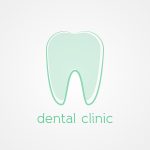What Is Cosmetic Bonding?
Cosmetic bonding is a popular and affordable dental procedure used to enhance the appearance of teeth. It involves applying a tooth-colored resin material to the surface of the teeth, which is then shaped, hardened, and polished to blend seamlessly with the natural tooth structure.
How Does Cosmetic Bonding Work?
The process of cosmetic bonding is simple and usually completed in just one visit to the dentist. Here’s how it works:
Step-by-Step Process
- Preparation: Minimal preparation is needed. Anesthesia is usually not required unless bonding is used to fill a decayed tooth.
- Color Matching: The dentist selects a resin shade that closely matches the natural color of your teeth.
- Tooth Surface Preparation: The surface of the tooth is gently roughened, and a conditioning liquid is applied to help the bonding material adhere.
- Application: The tooth-colored resin is applied, molded into shape, and smoothed to achieve the desired look.
- Curing: A special light is used to harden the resin quickly.
- Final Touches: The bonded area is trimmed, shaped, and polished to match the surrounding teeth.
Why Is Cosmetic Bonding So Popular?
This procedure has gained popularity because it offers several benefits compared to other cosmetic dental treatments. Here’s why many people choose cosmetic bonding for their smile makeover:
| Benefit | Description |
|---|---|
| Affordability | One of the most cost-effective cosmetic dental procedures available. |
| Quick Procedure | Treatment typically takes just one appointment. |
| Painless Process | No drilling or anesthesia required in most cases. |
| Naturally Blends In | The resin material closely matches your natural teeth for a seamless look. |
| No Major Tooth Alteration | The procedure preserves most of your natural tooth structure. |
Who Can Benefit from Cosmetic Bonding?
This treatment is ideal for individuals looking to fix minor imperfections in their teeth. It can effectively address issues such as:
- Chipped or cracked teeth
- Slight gaps between teeth
- Mild discoloration or stains
- Slightly misshapen teeth
- Aesthetic improvements for a more confident smile
A Simple Solution for a Brighter Smile
If you’re looking for an easy and affordable way to enhance your smile, cosmetic bonding could be a great option. With minimal preparation, quick results, and natural-looking outcomes, it’s no surprise that so many people choose this treatment to improve their smiles effortlessly.
Benefits of Cosmetic Bonding
Cosmetic bonding has become a popular choice for many Americans looking to improve their smile without breaking the bank or spending hours in the dental chair. Let’s explore some of the top benefits that make cosmetic bonding stand out among other cosmetic dental treatments.
Affordability
One of the main reasons people choose cosmetic bonding is its cost-effectiveness. Compared to veneers or crowns, bonding is generally much more affordable, making it accessible for a wider range of budgets. Here’s a quick comparison:
| Treatment | Average Cost (Per Tooth) |
|---|---|
| Cosmetic Bonding | $100–$600 |
| Porcelain Veneers | $900–$2,500 |
| Crowns | $1,000–$3,500 |
This makes cosmetic bonding a go-to option for anyone wanting to address minor imperfections without a hefty price tag.
Quick Treatment Time
If you’re looking for an instant upgrade to your smile, cosmetic bonding is hard to beat. Most procedures can be completed in just one office visit—usually within 30 minutes to an hour per tooth. There’s no need for temporary restorations or multiple appointments, so you can walk out with a better smile the same day you walk in.
Natural-Looking Results
The materials used in cosmetic bonding are designed to match the natural color of your teeth. This means your dentist can shape and polish the bonded area so it blends seamlessly with your existing teeth. The result? A beautiful, natural-looking smile that doesn’t look “worked on.”
Summary Table: Key Benefits of Cosmetic Bonding
| Benefit | Description |
|---|---|
| Affordable | Lower cost compared to other cosmetic options |
| Fast Treatment | Completed in one visit, minimal downtime |
| Natural Appearance | Matches your real teeth for a seamless look |
| No Anesthesia Needed (in most cases) | Painless and simple process for minor fixes |
| Minimally Invasive | No need to remove much tooth structure |

3. Who Is a Good Candidate for Cosmetic Bonding?
Cosmetic bonding is a popular and affordable way to improve your smile, but it’s not the perfect fit for everyone. Understanding who can benefit most from this treatment can help you decide if it’s the right choice for you. Here are some of the key factors that dentists in the U.S. consider when recommending cosmetic bonding:
Main Factors That Make You a Good Candidate
| Factor | Details |
|---|---|
| Mild to Moderate Tooth Imperfections | If you have chipped, cracked, or slightly misshapen teeth, cosmetic bonding can effectively cover and repair these issues. |
| Small Gaps Between Teeth | Bonding is ideal for closing small spaces between teeth without the need for braces or aligners. |
| Discoloration or Staining | Teeth that are stained or discolored and don’t respond well to whitening treatments may benefit from bonding materials that match your natural shade. |
| Healthy Teeth and Gums | You should have generally healthy teeth and gums since underlying dental problems like decay or gum disease should be treated first. |
| No Major Bite Problems | If your bite is properly aligned, bonding will last longer. Severe misalignment may require orthodontic treatment instead. |
| Non-Smokers Preferred | Smoking can stain the bonding material more quickly, so non-smokers tend to see better long-term results. |
When Cosmetic Bonding Might Not Be the Best Choice
- Extensive Damage: If your tooth is badly damaged or has significant decay, a crown or veneer may be recommended instead of bonding.
- Bite Issues: People who grind their teeth or have serious bite problems might wear down bonding faster than normal.
- Large Gaps or Alignment Concerns: Bigger gaps or crooked teeth usually need orthodontic solutions rather than cosmetic bonding.
The Consultation Process
Your dentist will check your oral health and discuss your goals before suggesting cosmetic bonding. They’ll make sure your teeth are ready for treatment and explain what kind of improvements you can expect based on your unique situation. This ensures you get results that look great and last as long as possible in daily American life—from sipping iced coffee to smiling for photos at backyard barbecues!
4. How Much Does Cosmetic Bonding Cost?
When it comes to transforming your smile, cosmetic bonding is often celebrated for being both effective and affordable. But how much should you expect to pay if youre considering this treatment in the United States? Lets break down the typical costs and see how cosmetic bonding stacks up against other popular dental procedures.
Typical Costs of Cosmetic Bonding
On average, cosmetic bonding in the U.S. costs between $100 and $600 per tooth. The exact price depends on factors like the dentist’s experience, the location of the dental office, how many teeth need treatment, and the complexity of your case. Most dental insurance plans consider cosmetic bonding an elective procedure, so its usually not covered unless its needed for structural reasons.
Cost Comparison Table
| Treatment | Average Cost (per tooth) | Main Purpose |
|---|---|---|
| Cosmetic Bonding | $100–$600 | Minor chips, gaps, discoloration |
| Porcelain Veneers | $900–$2,500 | Dramatic smile makeover, shape & color changes |
| Crowns | $1,000–$3,500 | Restoring damaged or decayed teeth |
| Teeth Whitening (in-office) | $300–$1,000 | Brightening natural tooth color |
Why Choose Cosmetic Bonding?
If you’re looking for a budget-friendly way to improve your smile without committing to more invasive or expensive treatments, cosmetic bonding is a great choice. It’s quick—often done in a single visit—and doesn’t require removing much of your natural tooth structure. For minor corrections like fixing small chips, closing tiny gaps, or covering stains that whitening can’t lift, bonding offers a natural-looking result at a fraction of the cost of veneers or crowns.
Other Factors That Affect Cost
Keep in mind that prices can vary based on:
- The number of teeth treated: More teeth means a higher total cost.
- The extent of damage or correction: Simple repairs are less expensive than reshaping or rebuilding a tooth.
- Your location: Major cities or areas with higher living costs may have higher dental fees.
- Your dentists expertise: Experienced cosmetic dentists may charge more but can deliver better results.
5. Caring for Your Bonded Teeth
Taking care of your bonded teeth is key to keeping your new smile looking its best for years to come. Cosmetic bonding is durable, but it does need a bit of extra attention compared to natural teeth. Here are some simple tips and best practices that fit right into your daily routine:
Everyday Care Tips
- Brush twice a day: Use a soft-bristled toothbrush and non-abrasive toothpaste to avoid scratching the bonding material.
- Floss daily: Gently floss between your teeth to remove plaque and prevent staining around the bonded areas.
- Avoid hard foods: Try not to bite down on ice, nuts, or hard candies that could chip or crack the bonding.
- Watch out for stains: Limit drinks like coffee, tea, red wine, and sodas. If you do indulge, rinse your mouth with water afterward.
- No nail-biting or pen-chewing: These habits can damage both your natural teeth and bonded surfaces.
Regular Dental Visits
- Professional cleanings: Visit your dentist every six months for cleanings and check-ups. Your dentist will check the condition of your bonding during these visits.
- Touch-ups if needed: Cosmetic bonding may need occasional repairs or polishing to keep it looking fresh and smooth.
Lifestyle Habits That Help
| Lifestyle Habit | Bonded Teeth Benefit |
|---|---|
| Quit Smoking | Reduces risk of discoloration and staining |
| Use a Mouthguard at Night | Prevents damage from grinding or clenching (bruxism) |
| Wear a Sports Guard During Activities | Protects against accidental chips or breaks during sports |
| Stay Hydrated | Keeps mouth clean and reduces risk of cavities around bonded areas |
What to Do If You Notice Damage?
If you see any chips, cracks, or discoloration in your bonded teeth, don’t wait—call your dentist. The sooner you get it checked out, the easier it is to fix, and the better your smile will look in the long run.
